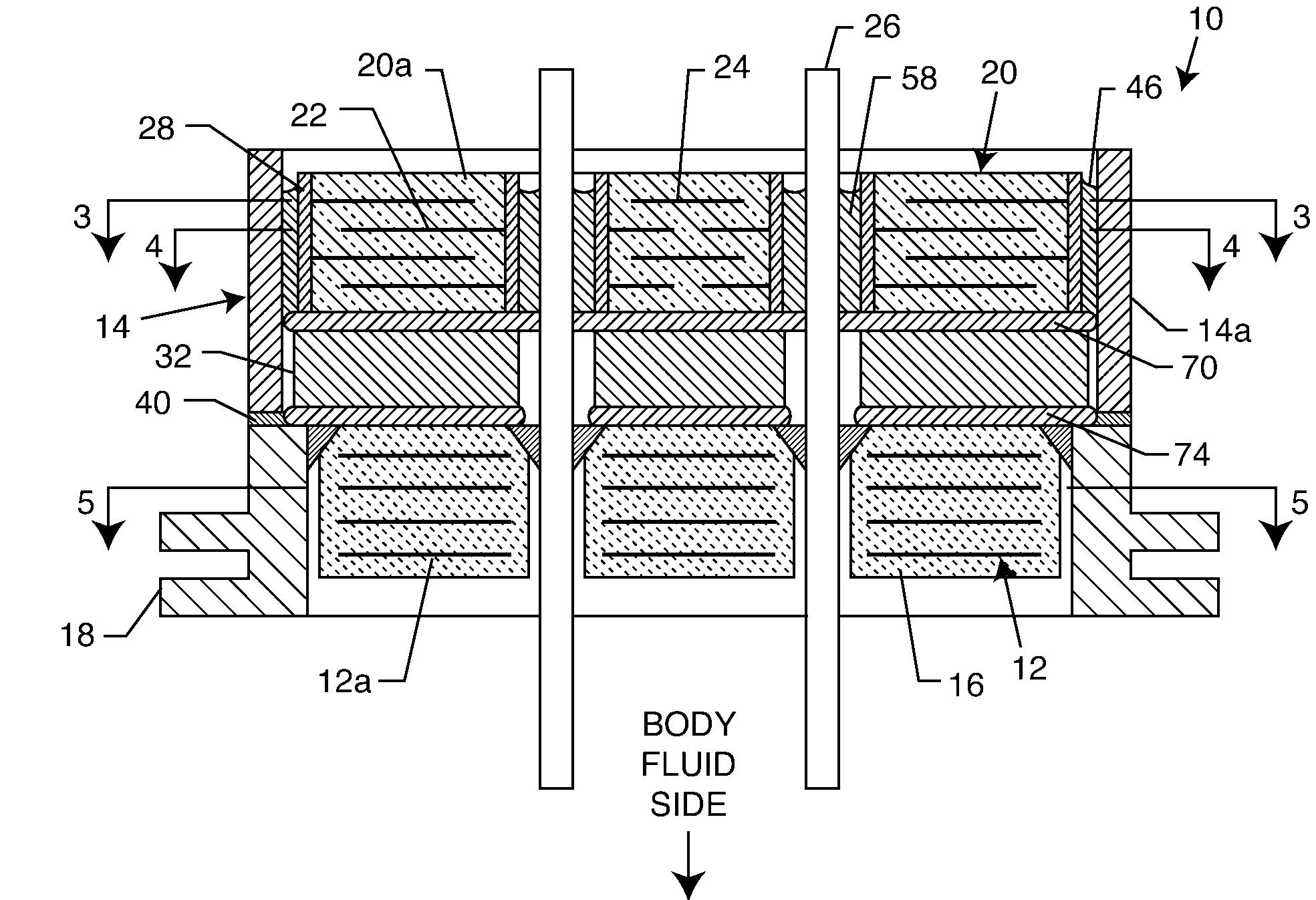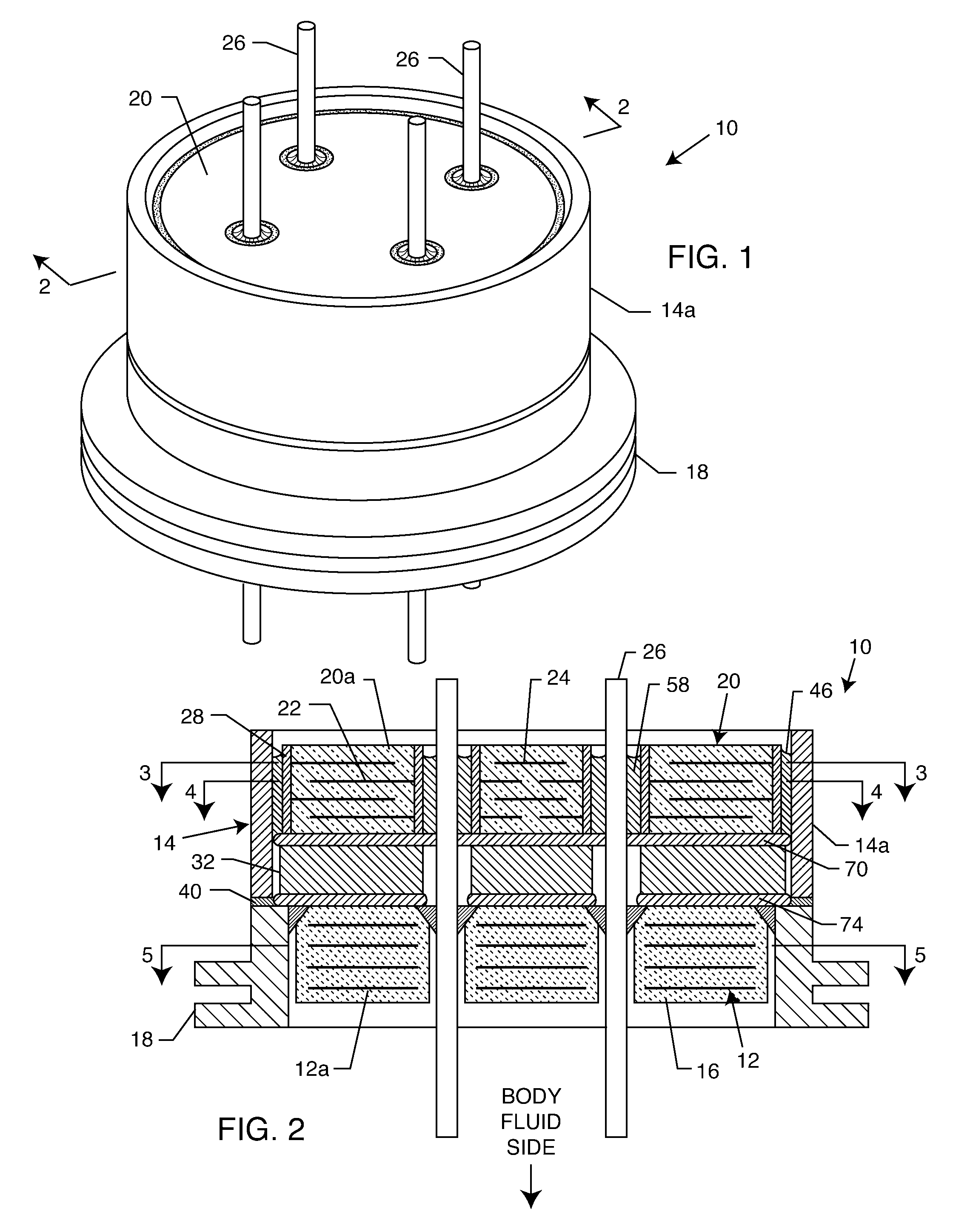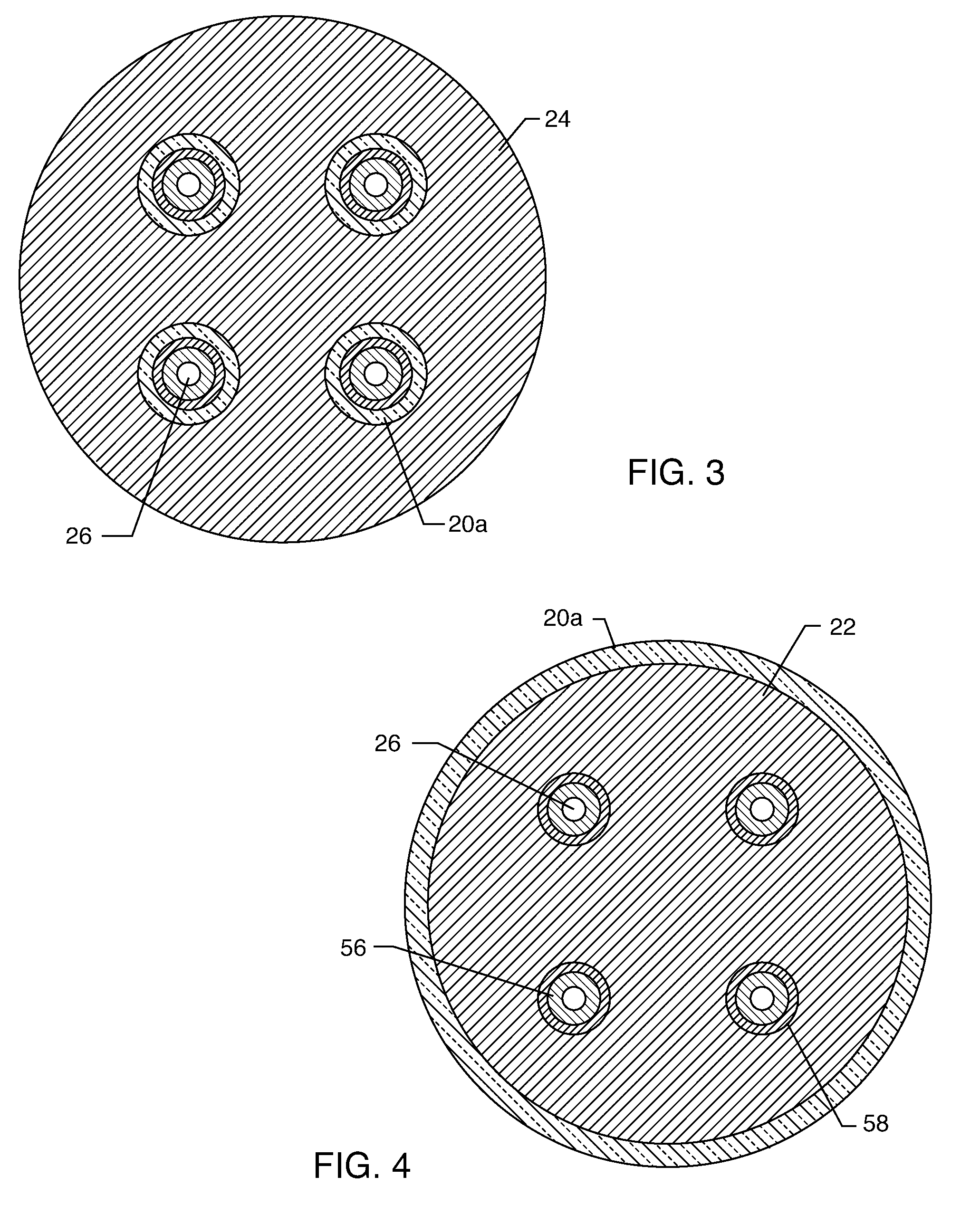Apparatus and process for reducing the susceptibility of active implantable medical devices to medical procedures such as magnetic resonance imaging
a technology filters, applied in the direction of fixed capacitor details, feeding through capacitors, therapy, etc., can solve the problems of latent problems of cardiac pacemakers, malfunction or failure and the inability to detect magnetic resonance imaging, etc., to improve the immunity of active implantable medical devices.
- Summary
- Abstract
- Description
- Claims
- Application Information
AI Technical Summary
Benefits of technology
Problems solved by technology
Method used
Image
Examples
Embodiment Construction
[0054]As shown in the drawings for purposes of illustration, the present invention relates to a feedthrough terminal assembly having magnetic shielding characteristics. FIGS. 1 and 2 illustrate a preferred embodiment wherein a feedthrough terminal assembly has an interior magnetic shield 12 and an exterior magnetic shield 14. The interior magnetic shield 12 comprises a plate 12a or a set of plates 12a embedded in an insulator 16 disposed over a central aperture of a conductive support 18 of the assembly 10. The conductive support 18 may comprise a ferrule or a housing. The embedded plate(s) 12a are comprised of a ferro-magnetic material such as nickel or the like. There are a number of other suitable materials for the plate set 12 or 12a. This can include any material containing magnetic dipoles, such as various nano-materials and other compositions. In general, the plate set has a mass density of at least 0.005 grams per cubic centimeter, a saturization magnetization of from about ...
PUM
 Login to View More
Login to View More Abstract
Description
Claims
Application Information
 Login to View More
Login to View More - R&D
- Intellectual Property
- Life Sciences
- Materials
- Tech Scout
- Unparalleled Data Quality
- Higher Quality Content
- 60% Fewer Hallucinations
Browse by: Latest US Patents, China's latest patents, Technical Efficacy Thesaurus, Application Domain, Technology Topic, Popular Technical Reports.
© 2025 PatSnap. All rights reserved.Legal|Privacy policy|Modern Slavery Act Transparency Statement|Sitemap|About US| Contact US: help@patsnap.com



